
TO THE OWNER
Congratulations! We welcome you to the exciting world of motor home travel and camping. You will
find it convenient and enjoyable to have all the comforts of home and still enjoy the great outdoors wher-
ever you choose to go.
Your motor home has been carefully designed, engineered and manufactured to provide dependability
as well as safety. Before sliding into the driver’s seat, take a few minutes to become familiar with opera-
tions and features. This manual was prepared to aid you in the proper care and operation of the vehicle and
equipment. We urge you to read it completely. In addition, spend some time with the dealer when you take
delivery, you will want to learn all you can about your new motor home.
Your new motor home is covered by a factory warranty against defects in material and workmanship.
This warranty should be validated at once and returned to the factory by your dealer.
Read and understand all instructions and precautions in this manual before operating your new motor
home.
About Safety Messages Used in This Manual
Throughout this manual, certain items are labeled Note, Caution, Warning or Danger. These terms alert
you to precautions that may involved damage to your vehicle or a risk to your personal safety. Read and
follow them carefully.
.
DANGER indicates a directly hazard-
ous situation which, if not avoided,
will result in death or serious personal
injury.
WARNING indicates a potentially
hazardous situation which, if not
avoided, could result in death or seri-
ous personal injury.
This SAFETY ALERT SYMBOL is used to draw your attention to issues which could involved
potential personal injury. This symbol is used throughout this manual and/or on labels affixed
on or near various equipment in this motor home.
DANGER
WARNING
132000-05-003October 2002

NOTE: A ‘Note’ is not necessarily safety related
but indicates a recommendation or special point
of information that could assist in understanding
the use or care of a feature item.
CAUTION indicates a potentially
hazardous situation which, if not
avoided, could result in damage
mainly to equipment or property, but
in some cases may also result in
minor or moderate personal injury.
CAUTION

*LP Gas tank capacity shown is the usable “full” LP gas capacity, which is 80% of the tank manufac-
turer’s listed water capacity (w.c. shown in parenthesis). An LP tank must have at least 20% of tank
volume free to allow for expansion and proper vaporization of the liquid fuel. The tank is also equipped
with mandatory safety shut-off equipment that prevents filling above this level.
OWNER’S NAME
STREET ADDRESS
CITY AND STATE (OR PROVINCE IN CANADA)
MOTOR HOME SERIAL NUMBER
VEHICLE CHASSIS IDENTIFICATION NO. (VIN)
DATE OF DELIVERY TO FIRST RETAIL PURCHASER
VEHICLE MILEAGE AT TIME OF DELIVERY
SELLING DEALER NAME AND ADDRESS
TANK CAPACITIES
Chassis Fuel Tank.......................................................................................................................................75 gal.
LP Gas Tank
Brave model 30W ................................................................................................................18 gal.* (23 gal. w.c.)
Brave models 32V, 34D, 36M.............................................................................................. 23 gal.* (28 gal. w.c.)
Fresh Water Tank
Brave model 30W ........................................................................................................................................78 gal.
Brave model 32V .........................................................................................................................................80 gal.
Brave model 34D .........................................................................................................................................80 gal.
Brave model 35M.........................................................................................................................................80 gal.
Water Heater - All Models...........................................................................................................................6 gal.
HT1 - Black Water Holding Tank
Brave model 30W (Toilet) ...........................................................................................................................40 gal.
Brave model 32V (Toilet) ............................................................................................................................50 gal.
Brave model 34D (Toilet) ............................................................................................................................40 gal.
Brave model 36M (Toilet)............................................................................................................................40 gal.
HT2 - Gray Water Holding Tank
Brave model 30W (Galley, Shower & Lavatory).........................................................................................54 gal.
Brave model 32V (Galley, Shower & Lavatory) .........................................................................................50 gal.
Brave model 34D (Galley, Shower & Lavatory) .........................................................................................45 gal.
Brave model 36M (Galley Shower & Lavatory)..........................................................................................50 gal.








INTRODUCTION
0-1
Congratulations on the purchase of your new
Brave motor home, which has been carefully
designed, engineered and quality built by
Winnebago Industries, Inc.
ABOUT THIS MANUAL
Please read this operator’s manual complete-
ly to understand how everything in your coach
works before taking it on its “maiden voyage.”
This manual is a guide to safe operation of the
features, equipment and controls in this coach.
Some equipment, such as the vehicle chassis and
certain electronic systems or appliances, have
their own comprehensive, manufacturer supplied
manuals or information sheets which describe
operation of these products in great detail. This
manual will refer you to the manufacturer’s in-
formation included in your Owner I
NFOCASE
whenever necessary.
SUBJECT ICONS - To make it easier for you
to find information you’re looking for, we have
placed convenient, pictorial symbols called
“icons” beside many of the subject headings in
this manual. The icons correspond to the subject
matter of the section. These icons were designed
similar to the familiar international symbols
which identify public facilities such as restrooms
and handicap access. There are several examples
of icons on this page.
PAGE ICONS - The icons at the upper cor-
ners of each page correspond to the primary con-
tent of each main section of the manual, such as
LP Gas, Electrical, Plumbing, etc. This means
you can flip through the manual either forward or
backward and know exactly which main section
you are looking for just by watching the icons at
the top of the page. This means less paging back
and forth.
We also urge you to read the complete
Chassis Operating Guide provided by the
chassis maker and all other operating infor-
mation provided by our equipment suppliers
and manufacturers. This is contained in your
Owner I
NFOCASE
TM
.
This manual should be kept in the vehicle at
all times for personal reference. The operator’s
manual, I
NFOCASE and chassis operating guide
are to be considered permanent components of
this vehicle. They should remain in the vehicle
when sold to provide the next owner with impor-
tant safety, operating and maintenance informa-
tion.
NOTE: The descriptions, illustrations, and
specifications in this manual were
correct at the time of printing. We
reserve the right to change specifications
or design without notice, and without
incurring obligation to install the same
on products previously manufactured.
CHASSIS OPERATING
GUIDE
Throughout this manual, frequent reference
is made to the chassis operating guide. The chas-
sis guide is the operator’s manual provided by the
manufacturer of the chassis on which this motor
home is built (i.e., Ford or Workhorse). Consult
the chassis guide for operating safety and mainte-
nance instructions pertaining to the chassis sec-
tion of the motor home.
OWNER’S INFOCASE
Your InfoCase contains information supplied
by manufacturers of individual appliances and
equipment installed in your motor home.
Consult this information regarding the opera-
tion and care of appliances, accessories and spe-
cial equipment.
OPTIONS AND EQUIPMENT
This model is available in several sizes and
floorplans, so accessories and components may
differ slightly between models. Some equipment
described in this manual may not apply to your
coach.

INTRODUCTION
0-2
BEFORE DRIVING
Before sitting in the driver’s seat, always
check around your vehicle to be sure you have
proper clearance for maneuvering. If necessary,
have a passenger help guide you out of a difficult
parking space.
Although your coach features automotive
conveniences like power steering and power
brakes, driving a motor home is different from
driving a car. A motor home is larger and heavier
than an automobile, so it requires more stopping
and passing distance, and more parking and ma-
neuvering space than does a car.
Always be aware of the size of your motor
home. The added height of roof air conditioners,
TV antennas or luggage boxes may cause clear-
ance problems around some tunnels, canopies
and hanging signs. Know the height of your unit
so you can observe posted clearance limits. Also,
remember that some bridges, old ones in particu-
lar, may not support the weight of your motor
home. Know the weight of your unit and observe
any posted weight limits.
Remember: Always use your seat belt and be
sure your passengers do so as well. We also ad-
vise making frequent rest stops while traveling to
relieve stress on yourself, your passengers and
your vehicle.
SERVICE AND
ASSISTANCE
Your dealer will be glad to provide any addi-
tional information you need, as well as answer
any questions you might have about operating the
equipment in your motor home. When it comes to
service, remember that your dealer knows your
vehicle best and is interested in your satisfaction.
Your dealer will provide quality maintenance and
any other assistance that you may require during
your ownership of this vehicle.
If you need warranty repairs while traveling,
however, you may take your motor home to any
Winnebago or Itasca dealership and they will as-
sist you.
WARRANTY
Your new vehicle is covered by a factory
warranty against defects in material and work-
manship. This warranty should be validated im-
mediately and returned to the factory by your
dealer. For additional information, see your
“New Vehicle Limited Warranty” included with
this vehicle.
DRINKING AND DRIVING
Winnebago Industries supports the recom-
mendations of the Presidential Commission on
Drunk Driving.
· Exercise your good judgment and encourage
others to do the same.
· Know the legal limits and do not exceed
them.
· Also know your personal limits, which may
be lower than the legal limits.
· Should you ever exceed your limits, find al-
ternative transportation; call a cab, ask a
friend to drive you home or call a family
member to come and get you.
The presence of alcohol in significant levels
in the blood increases the probability that the
driver will be involved in an accident.
REPORTING SAFETY DEFECTS
If you believe that your vehicle has a defect
which could cause a crash or could cause injury
or death, you should immediately inform the
National Highway Traffic Safety Administration
(NHTSA) in addition to notifying Winnebago
Industries, Inc.
If NHTSA receives similar complaints, it
may open an investigation, and if it finds that a
safety defect exists in a group of vehicles, it may
order a recall and remedy campaign. However,
NHTSA cannot become involved in individual
problems between you, your dealer, or Winneba-
go Industries.

0-3
INTRODUCTION
To contact NHTSA, you may either call the
Auto Safety Hotline toll-free at 1-800-424-9393
(or 366-0123 in Washington, D.C. area) or write
to: NHTSA, U.S. Department of Transportation,
Washington, D.C. 20590. You can also obtain
other information about motor vehicle safety
from the Hotline.

INTRODUCTION
0-4
VEHICLE CERTIFICATION LABEL
This label contains vehicle identification and other important reference information. The vehicle cer-
tification label is located on the sidewall to the left of the steering wheel, or on the driver’s door. Never
remove or destroy this label.
EXPLANATION OF DATA
1. Chassis manufacturer.
2. Chassis manufacture date.
3. Month and year of manufacture at Win-
nebago Industries.
4. Gross Vehicle Weight Rating: Total permis-
sible weight of the vehicle, including driver,
passengers, total cargo carried (including all
liquids) and equipped with all options.
5. Gross Axle Weight Rating: Total permissible
weight allowed for the front, and rear axles
(listed in pounds and kilograms).
6. Suitable Tire Choice: Tires recommended to
meet handling and safety requirements.
When replacing any of the tires on your
vehicle, always replace with a tire that meets
these specifications.
7. Suitable Rim Choice: Wheel rims recom-
mended to meet handling and safety require-
ments. When replacing any of the rims on
your vehicle, always replace with a rim that
meets these specifications.
8. Cold Inflation Pressure: Inflation pressures
recommended (while Cold) for the tires orig-
inally equipped on your vehicle. These pres-
sure levels must be maintained to assure
proper handling, safety and fuel economy.
9. Rear Axle Wheel Configuration: Single or
Dual.
10. Serial Number: This is the serial number
assigned to the completed vehicle by Win-
nebago Industries.
11. Vehicle Identification Number (VIN): This
number identifies the chassis on which the
motor home is built. The 10th digit of the
VIN designates the chassis model year.
(2=2002, 3=2003). This information is use-
ful when ordering chassis repair parts.
12. Type: States the NHTSA designated usage
classification for your motor home. MPV
signifies a Multi-purpose Passenger Vehicle.
13. Model: Lists the Winnebago product model
number of your vehicle.
14. Color: Signifies the color code number of the
decor used throughout the vehicle. This
number is necessary for ordering replace-
ment cushions, curtains, carpet, etc.
MANUFACTURED BY
INCOMPLETE VEHICLE MANUFACTURED
BY MOTOR CORP.
MONTH AND YEAR OF MANUFACTURE:________
GVWR_______LB _________KG
SUITABLE TIRE AND RIM CHOICE COLD INFLATION
TIRE RIM PRESSURE
GAWR:
FRT______ LB______ KG________________ ________________ ______ PSI______ KPA SINGLE
RR. _______ LB______ KG________________ ________________ ______ PSI______ KPA______
THIS VEHICLE CONFORMS TO ALL APPLICABLE FEDERAL MOTOR VEHICLE SAFETY
STANDARDS IN EFFECT ON THE DATE OF MANUFACTURE SHOWN ABOVE.
SERIAL NO. _________________________ VIN______________________________
TYPE ____________________ MODEL ____________________ COLOR__________
5
1
3
4
6
7
8
9
10
12
11
13
14
2

0-5
INTRODUCTION
EXTERIOR FEATURE IDENTIFICATION
Actual locations of features depends on coach model and options.
NOTE: Some equipment shown may be optional.


SECTION 1
SAFETY PRECAUTIONS
1-1
Read and understand all instructions and pre-
cautions in this manual before operating your
new motor home.
About Safety Messages Used in This Manual
Throughout this manual, certain items are la-
beled Note, Caution, Warning or Danger. These
terms alert you to precautions that may involved
damage to your vehicle or a risk to your personal
safety. Read and follow them carefully.
NOTE: A ‘Note’ is not necessarily safety related
but indicates a recommendation or special point
of information that could assist in understanding
the use or care of a feature item.
The following pages provide safety precau-
tions that must be adhered to. These precautions
as well as others that involve possible injury or
damage to equipment are also displayed in the
appropriate areas in this manual.
GENERAL WARNINGS
· Only seats equipped with seat belts are to be
occupied while the vehicle is moving.
· Make sure all passengers have seat belts
fastened in a low and snug position so the
force exerted by the belt in a collision will be
spread across the strong hip area. Pregnant
women should wear a lap-shoulder belt
whenever possible, with the lap belt portion
worn low and snug throughout the
pregnancy.
· All movable or swiveling seats should be
placed and locked in forward facing positions
while the vehicle is moving.
· Never let passengers stand or kneel on seats
while the vehicle is moving.
· Sleeping facilities are not to be utilized while
vehicle is moving.
· Examine the escape window and be familiar
with its operation, but do not use except in an
emergency.
• Inspect the fire extinguisher monthly for
proper charge and operating condition. This
should also be done before beginning a vaca-
tion or any extended trip.
DANGER indicates a directly hazard-
ous situation which, if not avoided,
will result in death or serious personal
injury.
WARNING indicates a potentially
hazardous situation which, if not
avoided, could result in death or seri-
ous personal injury.
CAUTION indicates a potentially
hazardous situation which, if not
avoided, could result in damage
mainly to equipment or property, but
in some cases may also result in
minor or moderate personal injury.
This SAFETY ALERT SYMBOL is
used to draw your attention to issues
which could involved potential personal
injury. This symbol is used throughout
this manual and/or on labels affixed on
or near various equipment in this motor
home.
DANGER
WARNING
CAUTION

SECTION 1
SAFETY PRECAUTIONS
1-2
DRIVING
· Do not attempt to adjust the driver’s seat
while the vehicle is moving.
· Do not adjust tilt steering in a moving vehi-
cle.
· Do not operate the cruise control on icy or ex-
tremely wet roads, winding roads, in heavy
traffic, or in any other traffic situation where
a constant speed cannot be maintained.
· Use care when accelerating or decelerating
on a slippery surface. Abrupt speed changes
can cause skidding and loss of control.
· Driving through water deep enough to wet
the brakes may affect stopping distance or
cause the vehicle to pull to one side. Check
brake operation in a safe area to be sure they
have not been affected. Never operate any ve-
hicle if a difference in braking efficiency is
noticeable.
· Adverse weather conditions and extremes in
terrain may affect handling and/or perfor-
mance of your vehicle. Refer to your chassis
manual for related information.
FUEL & LP GAS
· All pilot lights must be extinguished and ap-
pliances turned off while refilling the fuel
tank or LP tank.
· Never smoke while refilling vehicle fuel tank
or LP gas tank.
· Avoid inhaling exhaust gases produced by
burned gasoline, diesel fuel or LP gas in
items such as the range, chassis engine, gen-
erator engine, refrigerator, furnace and water
heater. They contain carbon monoxide,
which is an odorless, colorless and poisonous
gas.
· Do not bring or store LP gas containers, gas-
oline or other flammable liquids inside the
vehicle because a fire or explosion may re-
sult. LP gas containers are equipped with
safety valves which relieve excessive pres-
sure by discharging gas to the atmosphere.
· Do not fill LP gas container(s) above 80 per-
cent of capacity. Overfilling the LP gas con-
tainer can result in uncontrolled gas flow
which can cause fire or explosion. A properly
filled container will contain approximately
80 percent of its volume as liquid LP gas.
· Never use an open flame to test for LP gas
leaks. Replace all protective covers and caps
on LP system after filling. Make sure valve is
closed and door latched securely.
· Never connect natural gas to the LP gas sys-
tem.
· When lighting range burners do not turn
burner controls to “On” and allow gas to es-
cape before lighting match.
· Portable fuel-burning equipment, including
wood and charcoal grills and stoves, shall not
be used inside the recreational vehicle. The
use of this equipment inside the recreational
vehicle may cause fires or asphyxiation.
· LP gas regulators must always be installed
with the diaphragm vent facing downward.
Regulators are equipped with a protective
cover. Make sure that the regulator vent faces
downward and that the cover is kept in place
to minimize vent blockage which could result
in excessive gas pressure causing fire or ex-
plosion.
· The following warning label is located in the
cooking area to remind you to provide an ad-
equate supply of fresh air for combustion.

1-3
SECTION 1
SAFETY PRECAUTIONS
Unlike large homes, the oxygen supply inside
a recreational vehicle is limited due to its
size. To avoid danger of axphyxiation, pro-
vide proper ventilation when using the gas
rangetop or gas oven. It is especially impor-
tant that the gas oven and range top not be
used for comfort heating. Danger of asphyxi-
ation is greater when these appliances are
used for long periods of time.
LP GAS LEAKS
The following label is located in the vehicle
near the range area. If you smell gas within the
vehicle, quickly and carefully perform the proce-
dures listed.
LP GAS ALARM
Your coach is equipped with an LP gas detec-
tor which sounds an alarm if an unsafe amount of
LP gas is present inside the coach. Because LP
gas is heavier than air, the detector is located on
a cabinet face near the floor of the coach.
A green light on the face of the alarm shows
when the unit is active.
If the detector senses LP gas, the alarm will
make a loud, pulsating sound and the red light
will come on. Pressing the “MUTE” button will
stop the alarm for 60 seconds. If there is no more
detectable LP gas, the alarm will stay off. If the
detector still senses LP gas by the end of the 60
second mute mode, the alarm will sound again.
If The Alarm Sounds
If the alarm sounds, do not touch any electrical
switches. Immediately turn off the main LP tank
valve and all LP appliances, open all windows
and roof vents, and leave the coach until the
alarm stops sounding.
If the alarm keeps sounding at regular inter-
vals, a leak may be present. Contact your dealer
IF YOU SMELL GAS
1. EXTINGUISH ANY OPEN FLAME, PILOT LIGHTS AND
ALL SMOKING MATERIALS.
2. DO NOT TOUCH ELECTRICAL SWITCHES.
3. SHUT OFF THE GAS SUPPLY AT THE TANK VALVE(S)
OR GAS SUPPLY CONNECTIONS.
4. OPEN DOORS AND OTHER VENTILATING OPENINGS.
5. LEAVE THE AREA UNTIL ODOR CLEARS.
6. HAVE THE GAS SYSTEM CHECKED AND LEAKAGE
SOURCE CORRECTED BEFORE USING AGAIN.
FAILURE TO COMPLY COULD RESULT IN
EXPLOSION RESULTING IN DEATH OR
SERIOUS INJURY.
WARNING
IT IS NOT SAFE TO USE
COOKING APPLIANCES
FOR COMFORT HEATING
Cooking appliances need fresh air for safe
operation. Before operation
1. Open overhead vent or turn on exhaust fan.
2. Open window
FAILURE TO COMPLY COULD RESULT IN
DEATH OR SERIOUS INJURY.
DANGER
LP Gas Alarm

SECTION 1
SAFETY PRECAUTIONS
1-4
or an LP gas service center to have the problem
corrected before using the LP system again.
Power Connection
The gas alarm is powered by the coach batter-
ies. If the auxiliary battery switch is shut off or
the battery cable is disconnected from the batter-
ies, the alarm will not work. The LP gas alarm
circuit breaker or fuse is located on the 12-volt
house electrical load center (breaker panel).
Because the LP gas alarm is connected direct-
ly to the auxiliary battery, it is always drawing a
small amount of current. Even though this current
draw is slight, it could drain the coach battery
during storage periods of 30 days or longer. We
recommend turning the auxiliary battery switch
off or disconnecting the battery cables from the
auxiliary battery during extended storage periods
to avoid discharge.
If the coach batteries become extremely
drained (8.5 volts or less), the amber Low
Voltage/FAULT light on the face of the alarm
will come on, and in some rare cases the LP alarm
may begin to sound on its own. This condition is
not likely to occur except during storage situa-
tions when coach battery charge is not being
restored by the converter charger.
Other Combustible Fumes or Vapors
This alarm is designed to detect the presence
of LP gas, however there are other combustible
fumes or vapors which may be detected by the
sensor. These include: alcohol, liquor, deodor-
ants, colognes, perfumes, wine, adhesives, lac-
quer, kerosene, gasoline, glues, most all cleaning
agents and the propellants of aerosol cans. Most
are lighter than air in their vapor state and will
only be detected when the area is closed up.
Glues and adhesives may exhaust hydrocarbon
vapors for months after they are applied. They
are easily activated by high temperatures. If you
close up an RV coach on a hot day, the chemicals
used in its construction may be detected for
months after the coach was manufactured.
Further Information
See the manufacturer’s information entitled
“Your LP Gas Detector” in the Owner InfoCase
for further instructions on nuisance alarms and
care and testing of the LP gas detector.
ELECTRICAL
· Careless handling of electrical components
can be fatal. Never touch or use electrical
components or appliances while feet are bare,
while hands are wet, or while standing in wa-
ter or on wet ground.
· Improper grounding of the vehicle can cause
personal injury. Do not plug the utility power
cord into an outlet which is not grounded and
do not adapt the plug to connect to a recepta-
cle for which it is not designed.
· Do not attach an extension cord to the utility
power cord.
· Be sure that all electrical appliances to be
used contain 3-prong plugs for proper
grounding.
Never use an open flame to test for
gas leaks. When testing for gas line
leaks with a soapy water solution, DO
NOT use a detergent containing
ammonia or chlorine. These sub-
stances may generate a chemical
reaction causing corrosion to gas
lines, resulting in dangerous leak con-
ditions.
WARNING
110-Volt Load Center
Page is loading ...
Page is loading ...
Page is loading ...
Page is loading ...
Page is loading ...
Page is loading ...
Page is loading ...
Page is loading ...
Page is loading ...
Page is loading ...
Page is loading ...
Page is loading ...
Page is loading ...
Page is loading ...
Page is loading ...
Page is loading ...
Page is loading ...
Page is loading ...
Page is loading ...
Page is loading ...
Page is loading ...
Page is loading ...
Page is loading ...
Page is loading ...
Page is loading ...
Page is loading ...
Page is loading ...
Page is loading ...
Page is loading ...
Page is loading ...
Page is loading ...
Page is loading ...
Page is loading ...
Page is loading ...
Page is loading ...
Page is loading ...
Page is loading ...
Page is loading ...
Page is loading ...
Page is loading ...
Page is loading ...
Page is loading ...
Page is loading ...
Page is loading ...
Page is loading ...
Page is loading ...
Page is loading ...
Page is loading ...
Page is loading ...
Page is loading ...
Page is loading ...
Page is loading ...
Page is loading ...
Page is loading ...
Page is loading ...
Page is loading ...
Page is loading ...
Page is loading ...
Page is loading ...
Page is loading ...
Page is loading ...
Page is loading ...
Page is loading ...
Page is loading ...
Page is loading ...
Page is loading ...
Page is loading ...
Page is loading ...
Page is loading ...
Page is loading ...
Page is loading ...
Page is loading ...
Page is loading ...
Page is loading ...
Page is loading ...
Page is loading ...
Page is loading ...
Page is loading ...
Page is loading ...
Page is loading ...
Page is loading ...
Page is loading ...
Page is loading ...
Page is loading ...
Page is loading ...
Page is loading ...
Page is loading ...
Page is loading ...
Page is loading ...
Page is loading ...
Page is loading ...
Page is loading ...
Page is loading ...
Page is loading ...
Page is loading ...
Page is loading ...
Page is loading ...
Page is loading ...
Page is loading ...
Page is loading ...
Page is loading ...
Page is loading ...
Page is loading ...
Page is loading ...
Page is loading ...
Page is loading ...
Page is loading ...
Page is loading ...
-
 1
1
-
 2
2
-
 3
3
-
 4
4
-
 5
5
-
 6
6
-
 7
7
-
 8
8
-
 9
9
-
 10
10
-
 11
11
-
 12
12
-
 13
13
-
 14
14
-
 15
15
-
 16
16
-
 17
17
-
 18
18
-
 19
19
-
 20
20
-
 21
21
-
 22
22
-
 23
23
-
 24
24
-
 25
25
-
 26
26
-
 27
27
-
 28
28
-
 29
29
-
 30
30
-
 31
31
-
 32
32
-
 33
33
-
 34
34
-
 35
35
-
 36
36
-
 37
37
-
 38
38
-
 39
39
-
 40
40
-
 41
41
-
 42
42
-
 43
43
-
 44
44
-
 45
45
-
 46
46
-
 47
47
-
 48
48
-
 49
49
-
 50
50
-
 51
51
-
 52
52
-
 53
53
-
 54
54
-
 55
55
-
 56
56
-
 57
57
-
 58
58
-
 59
59
-
 60
60
-
 61
61
-
 62
62
-
 63
63
-
 64
64
-
 65
65
-
 66
66
-
 67
67
-
 68
68
-
 69
69
-
 70
70
-
 71
71
-
 72
72
-
 73
73
-
 74
74
-
 75
75
-
 76
76
-
 77
77
-
 78
78
-
 79
79
-
 80
80
-
 81
81
-
 82
82
-
 83
83
-
 84
84
-
 85
85
-
 86
86
-
 87
87
-
 88
88
-
 89
89
-
 90
90
-
 91
91
-
 92
92
-
 93
93
-
 94
94
-
 95
95
-
 96
96
-
 97
97
-
 98
98
-
 99
99
-
 100
100
-
 101
101
-
 102
102
-
 103
103
-
 104
104
-
 105
105
-
 106
106
-
 107
107
-
 108
108
-
 109
109
-
 110
110
-
 111
111
-
 112
112
-
 113
113
-
 114
114
-
 115
115
-
 116
116
-
 117
117
-
 118
118
-
 119
119
-
 120
120
-
 121
121
-
 122
122
-
 123
123
-
 124
124
-
 125
125
-
 126
126
-
 127
127
-
 128
128
Winnebago Brave 32V Owner's manual
- Category
- Cars
- Type
- Owner's manual
Ask a question and I''ll find the answer in the document
Finding information in a document is now easier with AI
Related papers
-
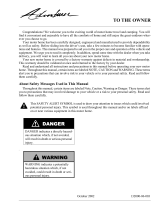 Winnebago 2003 adventurer Owner's manual
Winnebago 2003 adventurer Owner's manual
-
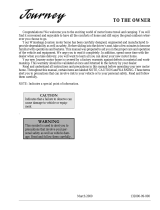 Winnebago Journey Owner's manual
Winnebago Journey Owner's manual
-
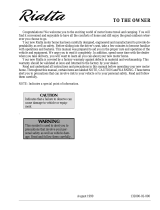 Winnebago rialta Owner's manual
Winnebago rialta Owner's manual
-
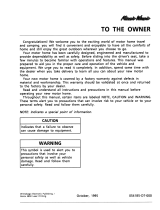 Winnebago 1996 Minnie Winnie User manual
Winnebago 1996 Minnie Winnie User manual
-
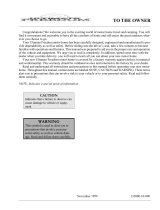 Winnebago 2000 Freedom User manual
Winnebago 2000 Freedom User manual
-
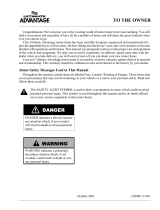 Winnebago Ultimate Advantage Owner's manual
Winnebago Ultimate Advantage Owner's manual
-
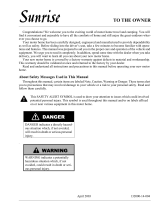 Winnebago Brave 34D User manual
Winnebago Brave 34D User manual
-
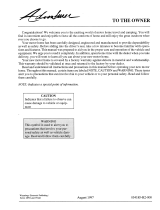 Winnebago Adventurer 1998 Owner's manual
Winnebago Adventurer 1998 Owner's manual
-
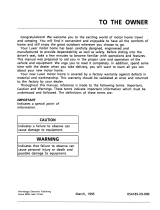 Winnebago 1996 Luxor Owner's manual
Winnebago 1996 Luxor Owner's manual
-
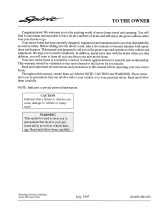 Winnebago 1998 Spirit User manual
Winnebago 1998 Spirit User manual
Other documents
-
ALFI BRAND AB2534-PC User manual
-
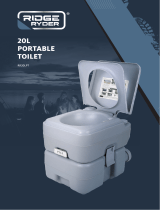 RIDGE RYDER RR20LPT User manual
RIDGE RYDER RR20LPT User manual
-
Fleetwood 1978 SouthWind Owner's manual
-
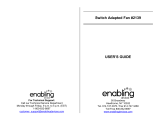 Enabling Devices 2139 User manual
Enabling Devices 2139 User manual
-
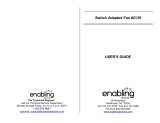 Enabling Devices 2139 User manual
Enabling Devices 2139 User manual
-
Atlantic Aeromobile 5000W User And Installation Instructions
-
Vanity Art VA2019-BN Installation guide
-
PyleHome PCVGNL8 Owner's manual
-
Project Source 1746EC 000 User manual
-
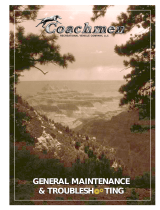 Coachmen RV Aurora Troubleshooting guide
Coachmen RV Aurora Troubleshooting guide













































































































































